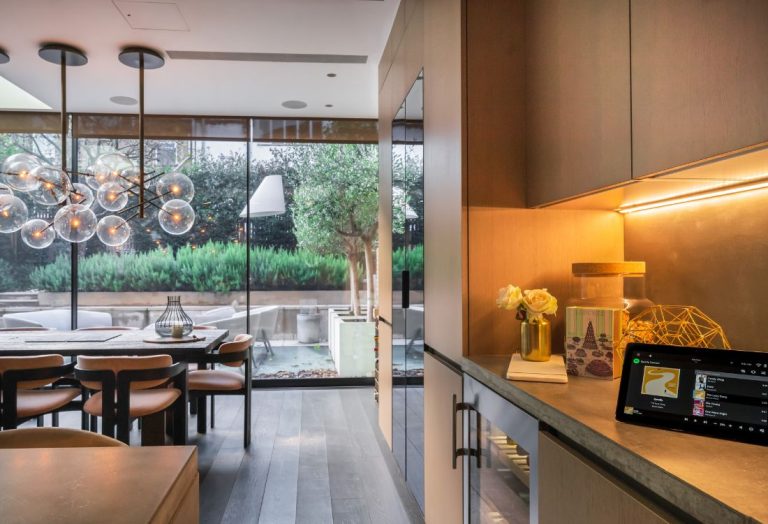CEDIA, an association of smart home experts, gathered information from installers and predicted trends included biometric authentication, voice control, immersive experiences and hyper-personalization.
Smart home experts association CEDIA conducted a study showing that biometric authentication, voice control, immersive experiences and hyper-personalization will be the standard for smart home automation in 2034.
CEDIA gathered input from experienced members and installers from around the world. Industry experts shared their insights and predictions based on current trends, customer demands and technological developments to paint a picture of what the smart home will look like in 10 years' time.
 Here's what they see as trends for 2034:
Here's what they see as trends for 2034:
Immersive experiences throughout the home: Fully immersive experiences in 3D with perspective choices will become the standard across entertainment, exercise, gaming, and remote work. Biometrics and voice control go mainstream: Administrative controls for security and utility systems will be controlled by biometrics and voice control, limiting the need for keys, switches, and apps for fixtures. Expect hyper-personalization: All systems and smart technology will be synced with wearable technology to create individual home preferences so homeowners don't have to lift a finger when they come home. Heating, sound systems, and lighting will be just some of the elements that will automatically change to suit their preferences. No more speakers and remote controls: Speakers and remote controls will disappear from view. Speakers will be cleverly hidden in the structure of the home and fixtures, so you won't see them in any room, but the audio quality will rival a nightclub. Remote controls for devices and fixtures will also disappear, in the form of voice activation and app control.
“I think the big areas we'll see are the rise of biometric authentication, the disappearance of the remote control and the possibility of consumers selling data in their homes,” said Walt Zebre, senior director of U.S. technology and standards at CEDIA. “I also think consumers will continue to drive technological change by becoming more tech-savvy and thinking differently than manufacturers.”
Steve Moore, UK-based founder of SMC Smart Home, added: “I think in 2034 the engineer-installer customer relationship will become even more of a priority. This is one of the most important differentiators separating installers from do-it-yourself customers using rapidly evolving technology, and it will become even more important in 2034.”
He continued: “It's clear that AI is currently an area of great development and discussion in the tech world. I believe that by 2034, AI will be fully relied upon, working seamlessly in the background across a vast array of devices and technologies, making homeowners' lives more streamlined and accessible.”
Other areas of significant development within the home environment include wearable robots for assisted living, a focus on energy efficiency, indoor-outdoor merging and advances in technology to create unique outdoor spaces that act as an extension of the home.
For more insights from experts and details on residential advancements in each area of the home, read here – What will the smart home of the future look like? (cedia.org)
David has been writing about a range of technologies, including AV, for over 20 years. After training with local media he worked in London for many years before moving to York in 2008. He now works remotely and enjoys life in the historic city. As well as technology, he spends a lot of his time writing for cricket-related magazines and websites.


